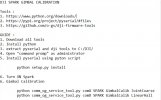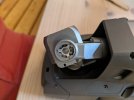Hello,
Looking for some advice. I have a gimbal Overload issue on my M2P.
Can anyone advise on diagnosing the fault before I start dismantling the gimbal? It's outside warranty and bought it second hand a few months back. No crashes, but I now suspect it may have been crashed by the previous owner.
The main fault is that the camera is unable to pitch up and down. And when manipulating the camera by hand I can feel a slight resistance in bumps as I rotate it. Am I best just replacing the pitch motors?
Any advice would be much appreciated. Thanks.
Looking for some advice. I have a gimbal Overload issue on my M2P.
Can anyone advise on diagnosing the fault before I start dismantling the gimbal? It's outside warranty and bought it second hand a few months back. No crashes, but I now suspect it may have been crashed by the previous owner.
The main fault is that the camera is unable to pitch up and down. And when manipulating the camera by hand I can feel a slight resistance in bumps as I rotate it. Am I best just replacing the pitch motors?
Any advice would be much appreciated. Thanks.











